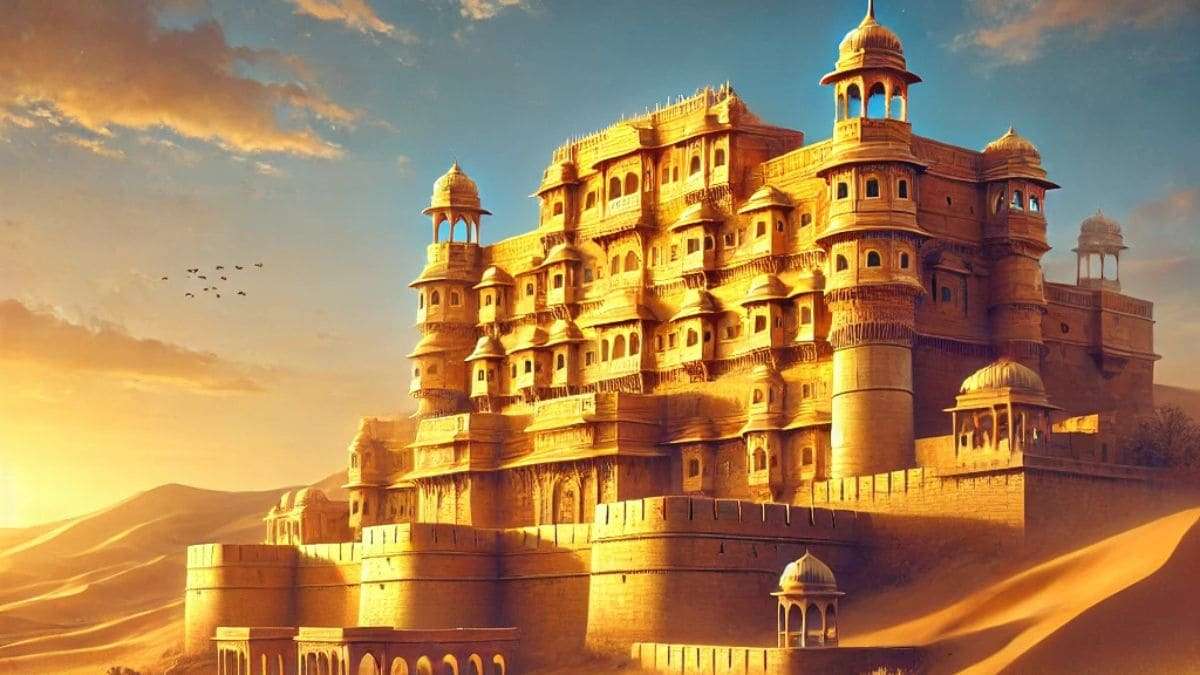Built of golden yellow sandstone in the heart of the Thar Desert, the Jaisalmer Fort dominates the amber-coloured city with its astonishing grandeur.
The city has an interesting legend associated with it, according to which, Lord Krishna – the head of the Yadav Clan, foretold Arjuna that a remote descendent of the Yadav Clan would build his kingdom atop the Trikuta Hill. His prophecy was fulfilled in 1156 A.D. when Rawal Jaisal, a descendent of the Yadav Clan and a Bhatti Rajput, abandoned his fort at Lodurva and founded a new capital – Jaisalmer, perched on the Trikuta Hill.
Bhati Rajputs of Jaisalmer were feudal chiefs who lived off the forced levy on the caravans laden with precious silks and spices that crossed the territory enroute Delhi-or Sind. These caravans earned the town great wealth.
For years Jaisalmer remained untouched by the outside influences. The rise of shipping trade and the port of Mumbai saw the decline of Jaisalmer. But the desert fortress, that seems to be straight out of the ‘Tales of the Arabian Nights’, still enchants.
The life within the citadel conjures up images of medieval majesty visible in its narrow lanes strewn with magnificent palaces, havelis, temples and of course skilled artisans and ubiquitous camels.
The setting sun turning Jaisalmer into a beautiful golden brown is a spectacular sight.
The perfect time to visit the golden city is during the Desert Festival, held in Jan/Feb. every year, when the city reverberates to the sound of melodius tunes and rhythms.
Folk dances, exciting competitions and contests, especially the turban-tying contest, Mr. Desert contest and camel races enliven the festivities. Colourful craft bazaars are set up for the occasion and a sound and light spectacle is organised with folk artistes performing against the splendid backdrop of the famous Sam sand dunes on the full moon night. Surely a not-to-be-missed event.
Contents
- 1 Places to visit in jaisalmer
- 2 Best Time to Visit
- 3 Travel Information
- 4 Distance From Major Cities
- 5 Jaisalmer weather
- 6 FAQs
- 6.1 What is the best time to visit Jaisalmer?
- 6.2 How can I reach Jaisalmer?
- 6.3 What are the must-visit attractions in Jaisalmer?
- 6.4 Is Jaisalmer safe for tourists?
- 6.5 What are the popular activities in Jaisalmer?
- 6.6 What should I pack for a trip to Jaisalmer?
- 6.7 Are there any desert camps to stay in?
- 6.8 What local cuisine can I try in Jaisalmer?
Places to visit in jaisalmer
Jaisalmer fort (Sonar Qila)
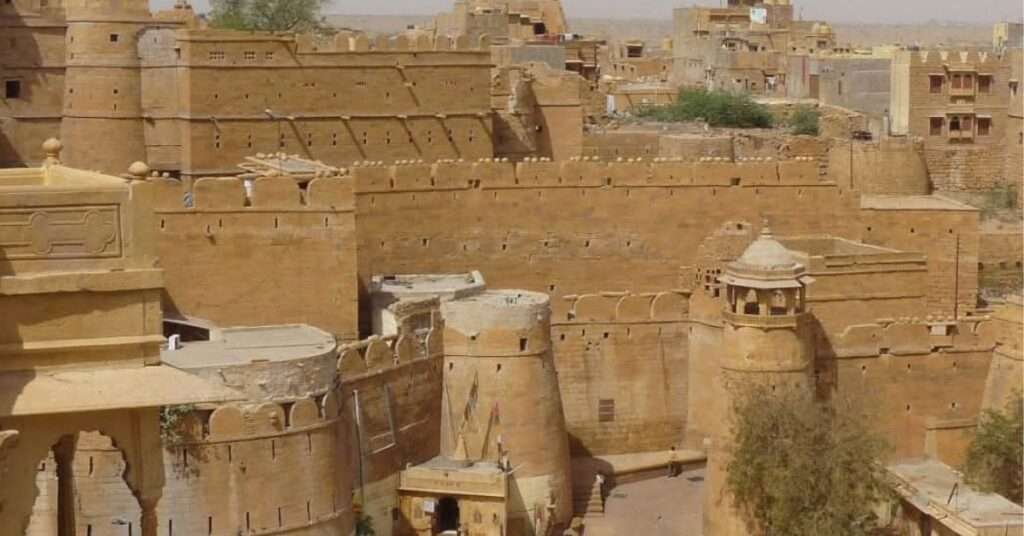
Jaisalmer Fort, famously known as Sonar Qila or the Golden Fort, is an architectural marvel and a testament to Rajasthan’s rich history and cultural heritage. Built in 1156 AD by Rao Jaisal, the fort stands tall in the heart of Jaisalmer, blending seamlessly with the golden sands of the Thar Desert.
Why Visit?
UNESCO World Heritage Site: Recognized as part of the Hill Forts of Rajasthan, it is celebrated for its historical and architectural significance.
A Living Fort: Unlike most forts that serve as historical relics, Jaisalmer Fort is a bustling community. Nearly a quarter of the city’s population resides within its walls, making it one of the few living forts in the world.
Golden Glow: The fort is built from yellow sandstone, giving it a glowing appearance when kissed by the rays of the setting sun—a mesmerizing sight for visitors.
Architectural Marvels
The fort rises like a mirage from the desert, encased by massive walls that stretch over 5 kilometers. It boasts 99 bastions, with an intricate latticework of defenses that once safeguarded the city. The entrance through the Ganesh Pol, Suraj Pol, and Hawa Pol gates leads to a labyrinth of narrow, winding alleys filled with vibrant life.
Highlights
Intricate Architecture:
The fort showcases a fusion of Rajput and Islamic designs, with ornate balconies, finely carved windows, and stunning facades.
Ancient Temples:
The fort houses seven Jain temples, dating back to the 12th and 16th centuries, adorned with exquisite carvings. The Laxminath Temple, dedicated to Lord Vishnu and Goddess Lakshmi, is another significant religious site within the fort.
Bustling Bazaars:
The narrow lanes are dotted with shops selling Rajasthani handicrafts, jewelry, textiles, and souvenirs, making it a paradise for shoppers.
Museums and Heritage:
Explore museums showcasing the fort’s history, including artifacts, weaponry, and old manuscripts that reveal its glorious past.
What to Do?
Photography: Capture the fort’s golden glow at sunrise or sunset.
History Walks: Join guided tours to learn about the legends and stories of the Rajput rulers.
Local Flavors: Savor authentic Rajasthani cuisine at rooftop cafes offering panoramic views of the desert city.
Best Time to Visit Jaisalmer Fort
The ideal months are between October and March, when the weather is cooler and more suitable for exploration.
Jaisalmer Fort isn’t just a monument; it’s a living piece of history where every stone whispers tales of bravery, artistry, and resilience. Visiting Sonar Qila is not just a journey into the past but an experience of vibrant culture and timeless beauty.
Visit Also – New Districts of Rajasthan Map|राजस्थान में नए जिलों का नक्शा | Download PDF In Hindi 2025
Patwon Ki Haveli: An Architectural Marvel of Jaisalmer
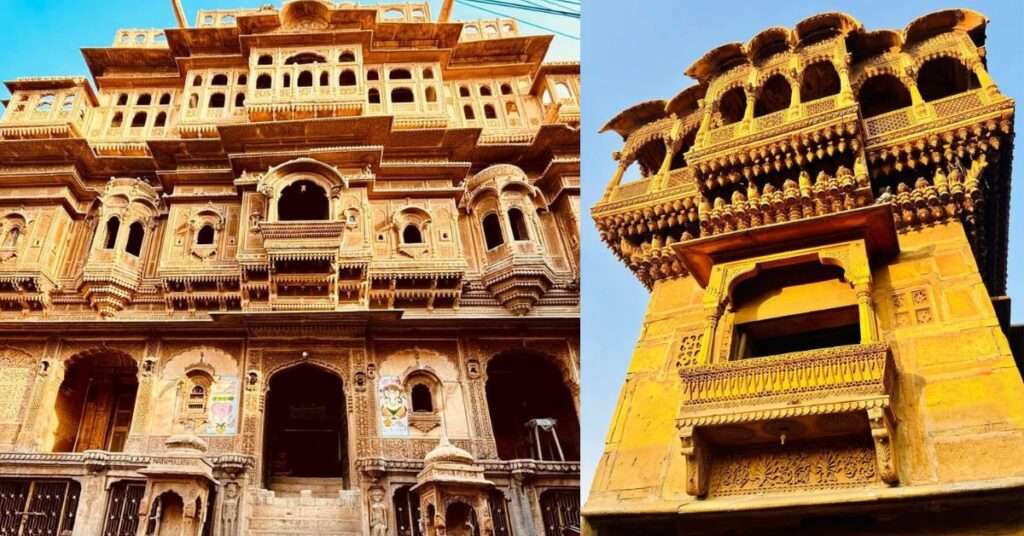
Patwon Ki Haveli, a magnificent cluster of five havelis, is one of Jaisalmer’s most iconic landmarks. Built in the early 19th century by Guman Chand Patwa, a wealthy trader, this haveli stands as a testament to the city’s rich heritage and craftsmanship. Its intricate sandstone carvings, delicate jharokhas (balconies), and ornate mirror work reflect the opulence of Rajasthan’s golden era. Each haveli has unique features, showcasing the grandeur of the merchant families who once resided here. Now home to museums and local shops, Patwon Ki Haveli offers visitors a journey through history, art, and culture in the heart of Jaisalmer.
Sam Sand Dunes
Sam Sand Dunes, located near Jaisalmer in Rajasthan, is a stunning desert destination offering a quintessential Thar Desert experience. Known for its golden dunes that stretch endlessly, it is a hub for camel safaris, jeep rides, and camping under starry skies. Visitors can witness breathtaking sunsets and enjoy vibrant cultural performances featuring Rajasthani folk music and dance. The dunes come alive during the Desert Festival with camel races, traditional attire displays, and other festivities. Perfect for adventure and photography enthusiasts, Sam Sand Dunes provides a magical escape into Rajasthan’s heritage and natural beauty, just 45 kilometers from Jaisalmer.
Gadisar Lake
Gadisar Lake, located in Jaisalmer, Rajasthan, is a serene man-made reservoir built in the 14th century by Maharawal Gadsi Singh. Once a crucial water source for the arid region, the lake is now a picturesque retreat surrounded by ornate temples, ghats, and cenotaphs. Visitors can enjoy peaceful boat rides while taking in the scenic beauty of the lake, especially during sunrise and sunset. The lake also attracts migratory birds, making it a haven for birdwatchers. A charming gateway adorned with intricate carvings leads to this tranquil spot, making Gadisar Lake a must-visit destination for history and nature enthusiasts.
Jain Temples
The Jain Temples in Jaisalmer, located within the majestic Jaisalmer Fort, are a remarkable example of ancient architecture and religious devotion. Built between the 12th and 16th centuries, these temples are dedicated to various Jain Tirthankaras and are renowned for their intricate carvings, exquisite sculptures, and detailed architecture. Made from golden-yellow sandstone, the temples showcase a unique blend of craftsmanship and spirituality, with delicate latticework and beautiful domes. The Parsvanath Temple, the largest among them, is particularly awe-inspiring. These temples are not only a place of worship but also a reflection of Jaisalmer’s rich cultural and artistic heritage.
Bada Bagh
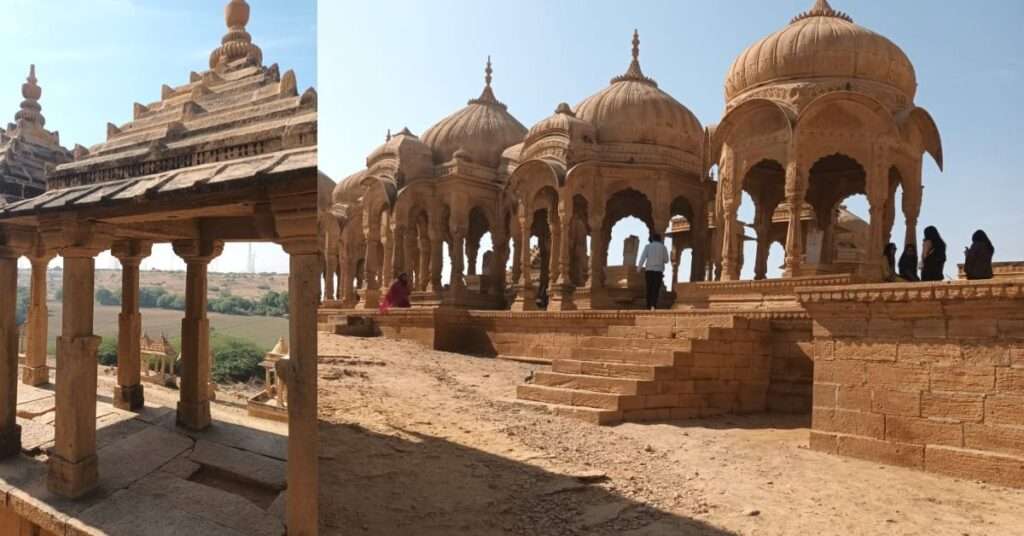
Bada Bagh, meaning “Big Garden,” is a historic site located about 6 kilometers from Jaisalmer, Rajasthan. This tranquil spot is famous for its cenotaphs (chhatris) built in honor of the rulers of Jaisalmer. The cenotaphs, made of intricately carved sandstone, stand against the backdrop of the desert and offer stunning views, especially during sunrise and sunset. The site also features a garden and a water reservoir, reflecting the region’s ingenuity in water management. Bada Bagh is a peaceful retreat where history, architecture, and natural beauty blend seamlessly, making it a must-visit destination for travelers seeking serenity and cultural insight
Desert National Park
Desert National Park, located near Jaisalmer in Rajasthan, is one of India’s largest and most unique protected areas. Spanning over 3,000 square kilometers, it showcases the diverse ecosystem of the Thar Desert. The park is home to an array of wildlife, including the critically endangered Great Indian Bustard, desert foxes, Bengal foxes, chinkaras, and various reptiles. Its landscape features vast sand dunes, rocky terrain, salt lake bottoms, and fossil-rich regions dating back millions of years. A haven for birdwatchers, it attracts migratory birds like falcons, kestrels, and eagles. Desert National Park offers a perfect blend of adventure, biodiversity, and geological wonders.
Visit Also – Discovering the Wonders of The Desert National Park in Jaisalmer
Kuldhara Village
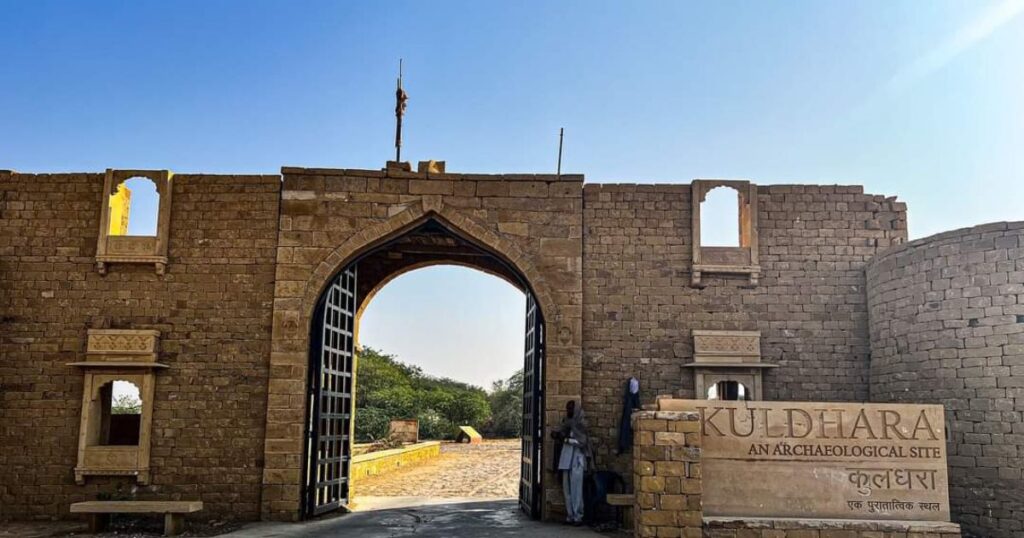
Kuldhara Village, located 18 kilometers from Jaisalmer, Rajasthan, is an abandoned settlement steeped in mystery and legend. Established in the 13th century by the prosperous Paliwal Brahmins, the village was suddenly deserted overnight in the early 19th century. According to folklore, the villagers cursed the land, making it uninhabitable. The eerie ruins of Kuldhara, with crumbling houses and empty streets, now attract curious travelers and history enthusiasts. Managed by the Archaeological Survey of India, the site offers a glimpse into the architectural style and lifestyle of its past inhabitants. Kuldhara is also regarded as one of India’s most haunted places, adding to its intrigue.
Visit Also – Kuldhara : दुनिया का सबसे सुंदर भुतहा (Haunted) गाँव 2024
Nathmal Ki Haveli
Nathmal Ki Haveli, located in Jaisalmer, Rajasthan, is an architectural masterpiece known for its intricate craftsmanship and grandeur. Built in the late 19th century, it served as the residence of Diwan Mohata Nathmal, the Prime Minister of Jaisalmer. The haveli is unique, as it was constructed simultaneously by two brothers who worked independently, resulting in slightly asymmetrical yet harmonious designs. The façade features exquisite carvings of flowers, elephants, and other motifs, while the interiors boast elaborate paintings and gold-leaf work. Nathmal Ki Haveli is a fine example of Rajasthan’s architectural brilliance, blending artistry with historical significance.
Tanot Mata Temple
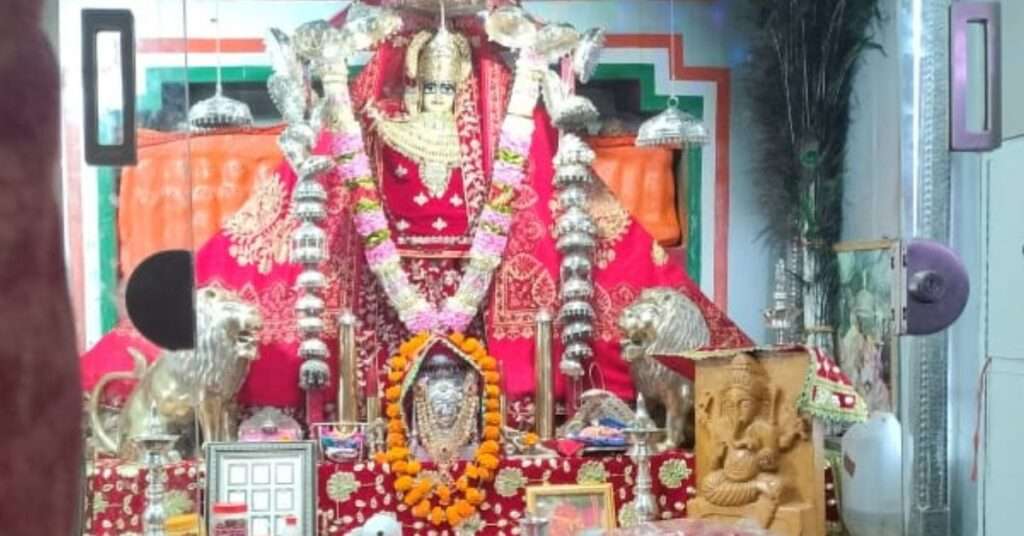
Tanot Mata Temple, located near the India-Pakistan border, about 120 kilometers from Jaisalmer, Rajasthan, is a revered shrine with a fascinating history. Dedicated to Goddess Tanot, an incarnation of Hinglaj Mata, the temple gained fame during the 1965 Indo-Pak War when Pakistani bombs failed to explode near it, preserving the temple and its surroundings. Managed by the Border Security Force (BSF), the temple is a symbol of faith and resilience. Visitors can explore a small museum displaying war relics and artifacts. Its proximity to the Longewala War Memorial and the serene desert landscape make Tanot Mata Temple a unique blend of spirituality and history.
Best Time to Visit
The ideal time to explore Jaisalmer is between October and March when the weather is pleasant, making outdoor activities more enjoyable.
Travel Information
How to Reach
By Air: Jaisalmer Airport (seasonal flights) or Jodhpur Airport (285 km away).
By Train: Well-connected to major cities like Delhi, Jaipur, and Jodhpur via Jaisalmer Railway Station.
By Road: Accessible via NH11, with regular buses and taxis from nearby cities.
Distance From Major Cities
- Jodhpur to Jaisalmer distance – 4 hr 56 min (279.6 km) via NH 11
- Jaipur to Jaisalmer distance – 10 hr 56 min (657.2 km) via NH 11
- Udaipur to Jaisalmer distance – 9 hr 34 min (514.4 km) via NH 125
- Delhi to Jaisalmer – 14 hr 35 min (772.7 km) via NH 11
Jaisalmer weather
Jaisalmer experiences an arid desert climate with hot summers (April–June), temperatures soaring above 40°C. Winters (October–March) are mild and pleasant, with temperatures ranging from 5°C to 24°C, making it ideal for sightseeing. Monsoon (July–September) brings light rains, though the region remains mostly dry and sunny.
FAQs
What is the best time to visit Jaisalmer?
The best time to visit is from October to March when the weather is pleasant and ideal for sightseeing and desert activities.
How can I reach Jaisalmer?
Jaisalmer can be reached by air (Jaisalmer Airport), train (Jaisalmer Railway Station), or road (buses and taxis from nearby cities like Jodhpur and Jaipur).
What are the must-visit attractions in Jaisalmer?
Key attractions include Jaisalmer Fort, Sam Sand Dunes, Gadisar Lake, Jain Temples, Nathmal Ki Haveli, and Bada Bagh.
Is Jaisalmer safe for tourists?
Yes, Jaisalmer is considered a safe destination for tourists. However, it’s always wise to stay alert and follow safety precautions, especially in remote areas.
What are the popular activities in Jaisalmer?
Popular activities include camel safaris in the desert, exploring the ancient forts and havelis, boat rides at Gadisar Lake, and shopping for local handicrafts.
What should I pack for a trip to Jaisalmer?
Pack light, breathable clothes for daytime, warm layers for evenings (in winter), sunscreen, sunglasses, and comfortable footwear for desert excursions.
Are there any desert camps to stay in?
Yes, there are many desert camps near Sam Sand Dunes, offering a unique experience of staying under the stars with cultural performances and activities.
What local cuisine can I try in Jaisalmer?
Try Rajasthani delicacies like Dal Baati Churma, Gatte ki Sabzi, Ker Sangri, and traditional sweets such as Ghevar and Lassi.
